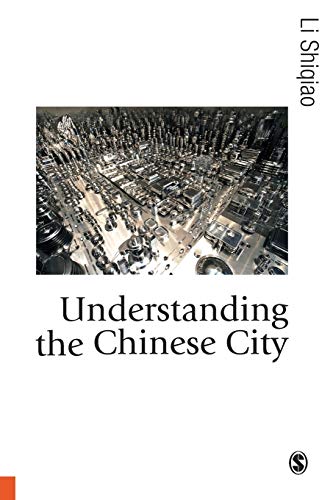Understanding the Chinese City
Li Shiqiao is Weedon Professor in Asian Architecture, School of Architecture, University of Virginia, where he teaches courses on history and theory of architecture, and architectural design studios. He studied architecture at Tsinghua University in Beijing and obtained his PhD from AA School of Architecture and Birkbeck College, University of London. Li practiced architecture in London and Hong Kong, and initiated design proposals which were published and exhibited in journals and international exhibitions. Some of his design research and teaching is featured in Kowloon Cultural District (Hong Kong: 2014, edited with Esther Lorenz). His research agenda contribute towards an understanding of Asian architecture with its intellectual independence and influences. His theoretical writings appeared in major international peered reviewed journals, and his books include Understanding the Chinese City (London: Sage, 2014), Architecture and Modernization (Beijing: 2009) and Power and Virtue, Architecture and Intellectual Change in England 1650-1730 (London and New York: Routledge, 2007). He was keynote speaker at University of Johannesburg, RMIT University, Melbourne University, Southeast University, Peking University, Beijing Normal University, and lectured widely in academic institutions throughout the world. He taught at AA School of Architecture, National University of Singapore and The Chinese University of Hong Kong. ... Read more Read less
"One thing is clear: in marginalising Chinese tradition and falling short of wholesale importation of Western cultural and political ideals and institutions, Chinese cities have become, in one sense, the scrapyard of half-hearted emulations and acts of resistance, appearing to be neither here nor there...” - Li Shiqiao, writing in the South China Morning Post This book teaches us to read the contemporary Chinese city. Li Shiqiao deftly crafts a new theory of the Chinese city and the dynamics of urbanization by: examining how the Chinese city has been shaped by the figuration of the writing system analyzing the continuing importance of the family and its barriers of protection against real and imagined dangers exploring the meanings of labour, and the resultant numerical and financial hierarchies demonstrating how actual structures bring into visual being the conceptions of numerical distributions, safety networks, and aesthetic orders. Understanding the Chinese City elegantly traces a thread between ancient Chinese city formations and current urban organizations, revealing hidden continuities that show how instrumental the past has been in forming the present. It contextualizes Chinese urban experiences in relation to familiar intellectual landmarks. Rather than becoming obstacles to change, ancient practices have become effective strategies of adaptation under radically new terms. ... Read more Read less











